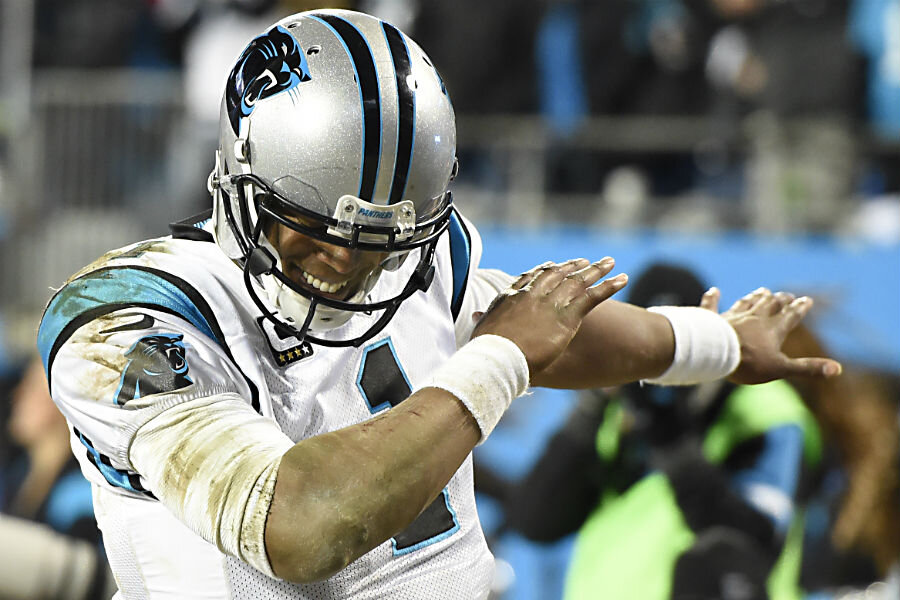Do we really need a 'dab' of drug culture in our dancing?
Loading...
From Betty White to the White House, people are doing the "dab," a trendy dance move that is shadowed by concerns over its perceived tie to cannabis culture.
The dance, which is basically performed by tucking your face into the crook of your elbow as though you were coughing into it, shares its name with a slang term for butane hash oil, a type of concentrated cannabis extract. Other terms can include "shatter," "honey," and "wax," depending on the material's consistency.
Fans of the dance defend it saying it’s nothing more than a fun fad, while others see it as a warning sign that drug culture has once again seeped into the mainstream.
As the debate over the dance builds, so too does the discussion about the potential dangers of the drug and its culture incursion to a younger set of users.
Super Bowl Sunday saw “dabbing” make a full transition into American culture as Betty White showed off her cultural relevance in a pre-game commercial in which she did the dab.
On Sunday, Twitter erupted with dab moments that rippled across the nation, including Michelle Obama with children performing the move at the White House.
“We got the whole world dabbing and they don’t even understand or even know what dab is. First of all, dab is a strong way to smoke marijuana, right, it’s the purest form of marijuana,” said hip hop performer Bow Wow in an Instagram video post. “It’s extremely strong, so the dance comes from when you smoke it you cough.”
The drug is typically smoked in a glass pipe or a modified bong, using a blowtorch.
Some have challenged the link between dancing the dab and smoking it, saying that the shared name is just a coincidence, with some arguing that the dance was the innocent creation of Clemson University football coach Dabo Swinney, which Swinney denies.
"I did not invent it and have no idea what it means," said Mr. Swinney in an email.
Wherever it began, it jumped into the mainstream when Carolina Panthers quarterback Cam Newton made it his new signature move back in October of 2015.
It’s hard to untangle the dance from the drug culture says Rosean Lindsey, community advocate in Norfolk, Va., author of “Hold On to Six Gs” says in an interview, “I saw this develop in New York where I come from. Kids do it [dab the drug] while they're dancing. And they smoke and cough.”
“They [musicians] created beats around it. They created a culture around it in hiphop,” Lindsey says. “Now that kid’s on the corner smoking a blunt is coughing into his arm like that, not because of the cough, but because of the culture that’s now in place. That cough, that dance are opportunities to represent.”
Another example came during a January television interview with Seattle Seahawks players. Seahawks defensive linemen Cliff Avril and Michael Bennett were asked “Do either of you guys dab?” The first response is furtive looks and the answer, “That’s, that’s illegal in Washington.” (It isn't.)
Of course, drug references in music are nothing new. In 1928 Louis Armstrong recorded his classic "Muggles," which he named for a slang term for cannabis. In years past, it was the name “Molly,” short for molecule, for the drug MDMA, that worked its way into song lyrics for a decade.
Lil Wayne [who starred in Sunday’s Apartments.com's Super Bowl 50 ad] is also known for the popularization in his songs of ‘purple drank’ or codeine/promethazine cough syrup mixed in with some Sprite in order to get high.
In August of 2014 the Regional Alliance for Substance Abuse Prevention in Virginia held a conference where experts urged parents not to allow dabbing lyrics and other cultural references into their children’s lives.
Bryan Lee Miller, Ph.D., associate professor at the department of criminal justice and criminology at Georgia Southern University, and John Stogner of the University of North Carolina, partnered to write cautionary papers for pediatric journals about the use of “dab.”
“I’m not sure of the connection between the dance and the drug,” says Mr. Miller in an interview. “But I am aware of the damage dabbing can do.”
“Making it and inhaling it can cause serious burns, and the concentrated form of THC is dangerous,” Miller says. “The process of creating these products [called blasting] is extremely dangerous because butane is flammable and volatile, and a number of fires, explosions, and severe burns have been attributed to home blasting."
A 2014 study by the University at Albany, State University of New York reached the conclusion that while “using ‘dabs’ created no more problems or accidents than using flower cannabis. Participants did report that ‘dabs’ led to higher tolerance and withdrawal (as defined by the participants), suggesting that the practice might be more likely to lead to symptoms of addiction or dependence.”
“I would encourage people to educate themselves on these trendy dances. The dance isn’t the problem, it’s losing the educational piece that worries me,” Lindsey adds. “You’re not going to stop people from doing something that’s trendy. But it’s valuable for parents to sit down with their kids to explain the history behind this dance because you need to know what you’re following. Understand what you’re representing.”
Lindsey says, “Maybe you see your child doing this dance and think it’s cute. But what you aren’t seeing is the time when other kids in a different setting, who embrace that drug culture, see your child or teen doing it and think they’re down with drugs and start peer pressuring them. Don’t leave them unprepared.”








